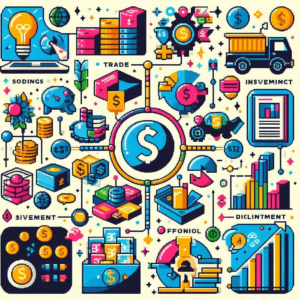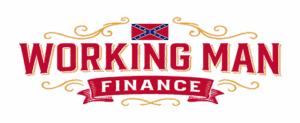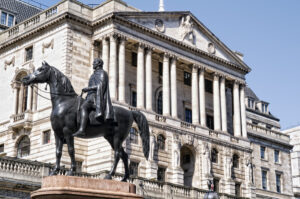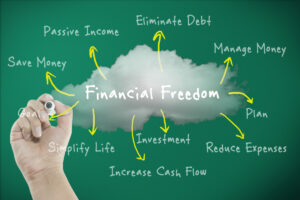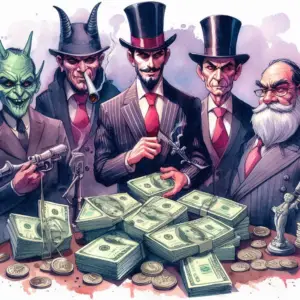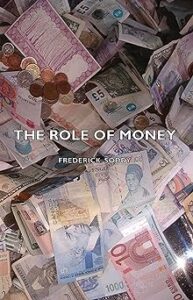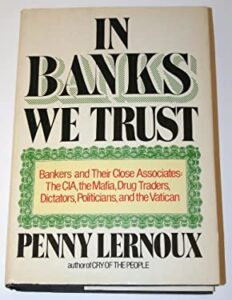In the realm of financial literature, many books have been written, yet not all receive the recognition they deserve.
Hidden away from mainstream discourse, these 16 forbidden books on money have been systematically overlooked, if not outright suppressed, by the establishment.
Within these pages, readers will find revolutionary ideas, controversial insights, and daring critiques of the financial systems that govern our lives.
Transitioning from mainstream to the obscure, one might wonder why these works have been marginalized. The answer lies in their power to challenge the status quo.
By shedding light on the mechanisms of wealth creation, the nature of debt, and the control wielded by financial institutions, these authors threaten the narratives upheld by those in power.
Therefore, it is essential to explore these forgotten gems, as they offer invaluable perspectives on the monetary forces that shape our world.
As the list unfolds, each book will be introduced with a brief overview, emphasizing its unique contributions and the reasons for its suppression.
It is hoped that by delving into these works, readers will gain a deeper understanding of the complexities of our financial system and the hidden dynamics at play.
In uncovering these truths, one can be better equipped to navigate the economic landscape with greater awareness and insight.
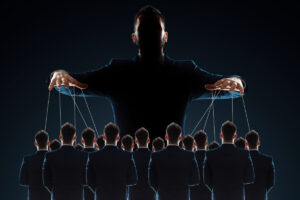
16.) Money Creators: Who Creates Money, Who Should Create It by Gertrude Margaret Coogan
“Money Creators: Who Creates Money, Who Should Create It” is a seminal work by Gertrude Margaret Coogan that delves deep into the often opaque world of money creation.
Coogan meticulously explores the history and evolution of monetary systems, emphasizing the profound significance of the power to create money and its implications for economic stability and growth.
By scrutinizing the roles of central banks, commercial banks, and governments in this process, she illuminates the intricate dynamics and potential risks associated with private money creation.
One of the book’s unique contributions is its critical examination of the current monetary system, alongside Coogan’s proposition of alternative models aimed at enhancing economic outcomes.
Her advocacy for a more democratic approach to money creation, emphasizing public control and accountability, presents a radical departure from the established norms.
This perspective, coupled with her comprehensive analysis, challenges the prevailing financial narratives and underscores the need for reform.
The suppression of Coogan’s work by the establishment can be attributed to its revolutionary ideas that threaten the entrenched power structures within the financial system.
By exposing the complexities and proposing significant changes, “Money Creators” invites readers to reconsider the foundational aspects of our economy, making it a crucial read for anyone interested in understanding and potentially transforming the monetary landscape.
This scarce antiquarian book, reprinted to preserve its cultural importance, continues to offer valuable insights that resonate with contemporary economic discussions.
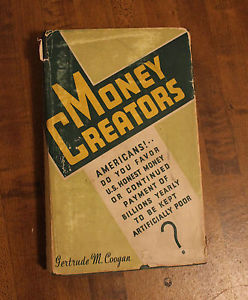
15.) The Secrets of the Federal Reserve by Eustace Mullins
“The Secrets of the Federal Reserve” by Eustace Mullins presents revealing facts about the Federal Reserve System.
This system is not a U.S. government bank. It is not controlled by Congress. Instead, it is a privately owned central bank, controlled by elite financiers for their own interests.
Mullins highlights how these elites manipulate excessive interest rates, inflation, and the printing of paper money. Consequently, they control the rise and fall of prosperity in the United States.
Transitioning to the impact, Mullins asserts that the Federal Reserve elite holds significant sway over the American economy.
He argues that their influence extends globally. Although not mainstream, his work is crucial for understanding this predatory power structure.
Mullins’ book stands alone in its thorough examination of this topic.
It is essential to read this book to grasp the full extent of the Federal Reserve’s control. This pivotal work has been mimicked and copied but never equaled.
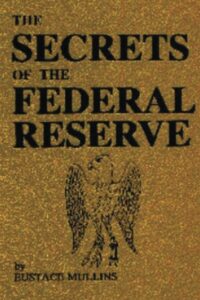
14.) Money: Questions and Answers by Father Charles E. Coughlin
“Money: Questions and Answers” by Father Charles E. Coughlin is an enlightening and accessible guide to understanding money.
Coughlin, the famed “radio priest” of the 1930s, was a vocal critic of the Federal Reserve System and the Roosevelt administration.
He believed the Money Power relied on the public’s lack of knowledge to maintain control. This book demystifies the topic, making it accessible to everyone.
Presented as a series of simple questions and answers, Coughlin’s book covers a wide range of topics including banking, investing, budgeting, and debt management.
Each section addresses specific financial concepts in easy-to-understand language. This makes it ideal for readers of all financial backgrounds.
In addition, practical advice, tips, and real-life examples help readers make informed financial decisions. Therefore, this book is an excellent resource for anyone looking to improve their financial literacy.
Overall, “Money: Questions and Answers” is a must-read for those seeking to take control of their finances.
Coughlin’s clear explanations and practical guidance make it an invaluable tool for achieving financial freedom.

13.) Primer on Money: What is Money, How Is It Created, and the Role of the Federal Reserve by Wright Patman
“Primer on Money” by Wright Patman is an essential and straightforward guide to understanding the fundamentals of money and the Federal Reserve.
Patman, a genuine populist and fierce critic of the Federal Reserve, spent much of his congressional career exposing its hidden operations. This primer, first released in 1964, remains highly relevant.
In simple, everyday language, the book explains what money is, how it is created, and the role of the Federal Reserve System.
Patman reveals that the Federal Reserve is not owned by the government but by private banks.
This critical insight highlights the need for public scrutiny and potential reform.
The primer covers several key topics:
- What is money?
- How is money created?
- The Role of The Federal Reserve System
- Money Supply and Monetary Policy
- Improvements in the Money System
Despite being over fifty years old, Patman’s insights remain crucial for understanding current discussions about the Federal Reserve.
This book is invaluable for students of monetary policy, academics, policymakers, journalists, and anyone interested in learning the basics of money and the Federal Reserve.
Its clear explanations and timeless relevance make it a must-read for those seeking to grasp the complexities of the U.S. monetary system.
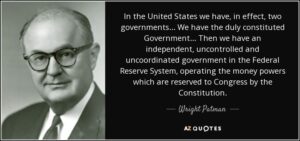
12.) The Shadow Moneylenders by Matthias Chang
“The Shadow Moneylenders” by Matthias Chang is an eye-opening exploration into the hidden workings of the global financial system.
From the very first page, readers are gripped by Chang’s revelations about the covert operations that have shaped the world’s economy for over 30 years.
This compelling book unveils the shocking truth behind the Federal Reserve System and the structure of Central Banks, demonstrating their complicity in the largest wealth transfer in history.
Chang meticulously unravels the complex structures and baffling terminology of derivative trading, exposing the hidden loan sharking operations of the Shadow Money-Lenders.
For the first time, the public learns the ultimate secret that has allowed these financial predators to amass a fortune greater than the U.S. economy.
Former President George H. W. Bush reportedly said, “If the people knew what they have been doing, they would be lynched in the streets,” highlighting the severity of the revelations within these pages.
A barrister with over 31 years of experience and a former Political Secretary to Malaysia’s Prime Minister, Chang brings a wealth of knowledge to his analysis.
His previous bestsellers, “Future Fast-Forward” and “Brainwashed for War,” have already established him as a bold critic of the Zionist-Anglo-American financial system.
In “The Shadow Moneylenders,” he goes further, providing a comprehensive overview of the global money scam and its corrupt nature.
This book covers a wide range of topics, including the nature of fiat money, the fraudulent structure of mortgage-backed securities, and the impending financial Armageddon.
Chang’s insights into the derivative market, the concept of paper money before and after 1971, and the role of figures like Alan Greenspan in the global banking collapse make this a must-read for anyone interested in understanding the venal nature of international finance.
Matthias Chang’s fearless examination of the Shadow Money-Lending System is essential reading for those seeking to comprehend the true forces behind the global economy.
His call for the abolishment of the Federal Reserve System and the restructuring of Central Banks is a courageous endeavor, offering readers not just information, but a call to action against the most ferocious financial predator in history.
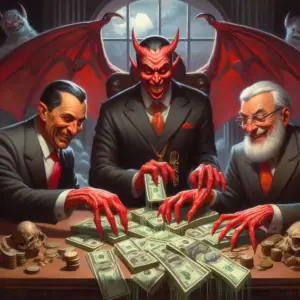
11.) The Creature from Jekyll Island: A Second Look at the Federal Reserve by G. Edward Griffin
“The Creature from Jekyll Island” by G. Edward Griffin pulls back the curtain on the mysteries of money.
Where does it come from? Where does it go? Who makes it? Griffin reveals the secrets of the money magicians, exposing the pulleys, cogs, and wheels that create the grand illusion called money.
Far from being a dry subject, this book reads like a detective story, captivating readers within the first five minutes.
Griffin’s work exposes the Federal Reserve as the perpetrator of the most blatant scam in history. Through a detailed investigation, he explains how this institution has been the cause of wars, boom-bust cycles, inflation, depression, and prosperity.
The book unveils the hidden mechanisms behind these economic phenomena, making complex topics accessible and engaging.
With each page, readers are drawn deeper into the machinations of the Federal Reserve. Griffin’s compelling narrative ensures that readers will question everything they thought they knew about money.
This book is a “must-read,” promising to change your world view. After reading it, you will never trust politicians or bankers the same way again.

10.) The Bankers Conspiracy! Which Started the World Crisis by Arthur Kitson
“The Bankers Conspiracy! Which Started the World Crisis” by Arthur Kitson is a compelling work that delves into the machinations of international financiers.
As an engineer, scholar, and advocate for honest money reform, Kitson presents evidence and warnings of an impending world crisis, which he foresaw in January 1919.
Kitson argues that money is not inherently international and that efforts to make it so are part of a deep-laid plot by certain international financiers.
These financiers, through the establishment of the Bank of International Settlements in Basel, aim to control the world politically, industrially, and financially.
Kitson warns that adopting an international money system will enslave the masses to a soulless despotism and lead to further wars..
Workers worldwide would be forced into a cut-throat wage competition, reducing them to mere subsistence.
Moreover, Kitson suggests that the alternative to this grim future would be the raising of global tariff barriers. His insights are a stark reminder of the potential dangers of unchecked financial power and the importance of honest money reform.
This book is essential reading for anyone interested in understanding the intricate connections between global finance and political power, making it clear why the establishment might suppress such revelations.
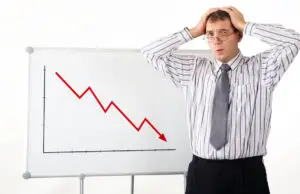
9.) Banking and Currency and The Money Trust by Charles A. Lindbergh, Sr.
“Banking and Currency and The Money Trust” by Charles A. Lindbergh, Sr., a former American Congressman from Minnesota and father of the famous aviator, is a profound critique of the Federal Reserve Act.
Written in 1913, this classic work warns of the looming takeover of the U.S. economy by a private foreign banking cartel, misleadingly known as the “Federal” Reserve System.
Lindbergh, with keen insight, explains the complexities of banking and currency within the scope of a concise volume, making the topic accessible and understandable.
He emphasizes that no civil matter stemming from our current social conditions is more crucial than the money problem.
This initial study is just the beginning of a broader investigation into business, politics, and life, highlighting how ordinary conditions relate to extraordinary, often misunderstood circumstances.
Lindbergh’s examination aims to shed light on these obscure conditions, fostering a deeper understanding among readers.
He believes that if a majority engage with these considerations, they will gain a clearer understanding of present economic conditions and better utilize the common advantages available to all.
This book is an essential read for those seeking to uncover the hidden realities of the U.S. monetary system and understand why the establishment might suppress such critical insights.
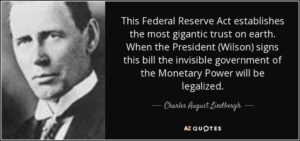
8.) Money: Its Nature and Function by Charles Bonsall
“Money: Its Nature and Function” by Charles Bonsall is an insightful exploration into the essence and role of money in our economy.
Bonsall delves into the fundamental nature of money, examining its origins, purpose, and the functions it serves within various economic systems.
Bonsall’s analysis extends to how money impacts economic stability, growth, and the distribution of wealth.
He explains complex monetary concepts in a clear, understandable manner, making this book accessible to readers with varying levels of economic knowledge.
Furthermore, Bonsall addresses the broader implications of monetary policy and the influence of different financial institutions on the economy.
By uncovering the intricacies of money, he provides readers with a comprehensive understanding of how monetary systems operate and the potential reforms needed to ensure a fairer and more efficient economic structure.
This book is a crucial resource for anyone seeking to grasp the deeper meaning of money and its pivotal role in shaping economic realities.
Bonsall’s work offers valuable insights that challenge the status quo, making it a significant read for those interested in monetary theory and economic reform.
